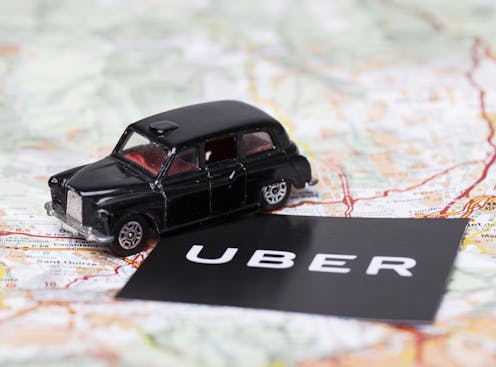Uber's U-turn over listing black cabs isn't difficult to understand when you look at its finances
- Written by John Colley, Professor of Practice, Associate Dean, Warwick Business School, University of Warwick

Uber is courting[1] its arch enemy, London black cabs, inviting them[2] to add their services to its app for the first time. Licensed taxis in 33 countries, including France and the US, have already received similar invitations. According to Uber[3] this has brought significant new trade to traditional taxis.
It is not clear that black cabs accepting this offer will see much benefit, however – and sure enough their trade association has put out[4] a statement to say that most will not be participating. Black cabs’ main advantages over apps like Uber are kerb hailing and taxi ranks, which are probably their biggest sources of income. They also have their own ride-hailing app[5] and already feature on Uber rivals Bolt[6] and FreeNow[7].
Indeed, appearing on Uber is only likely to emphasise the difference between their prices and those of other taxis on the app, as well as the fact that hackneys have more uncertain fares due to metering. There are also far more Uber cars in London, believed to be in the order of 45,000[8] compared with around 15,000[9] black cabs. And with so few hackneys likely to sign up, there will probably be very poor response times on the app from any that do.
Since Uber arrived in London in 2012, the number of black cabs has fallen by about 6,000[10]. Uber’s early cavalier approach to rules around insurance and driver ID led to Transport for London withdrawing its licence to operate in 2017[11] and then again in 2019[12]. Uber won a new licence[13] on appeal in 2022 after agreeing to overhaul its processes to ensure better driver compliance and passenger safety.
Black cabs and the Uber effect







